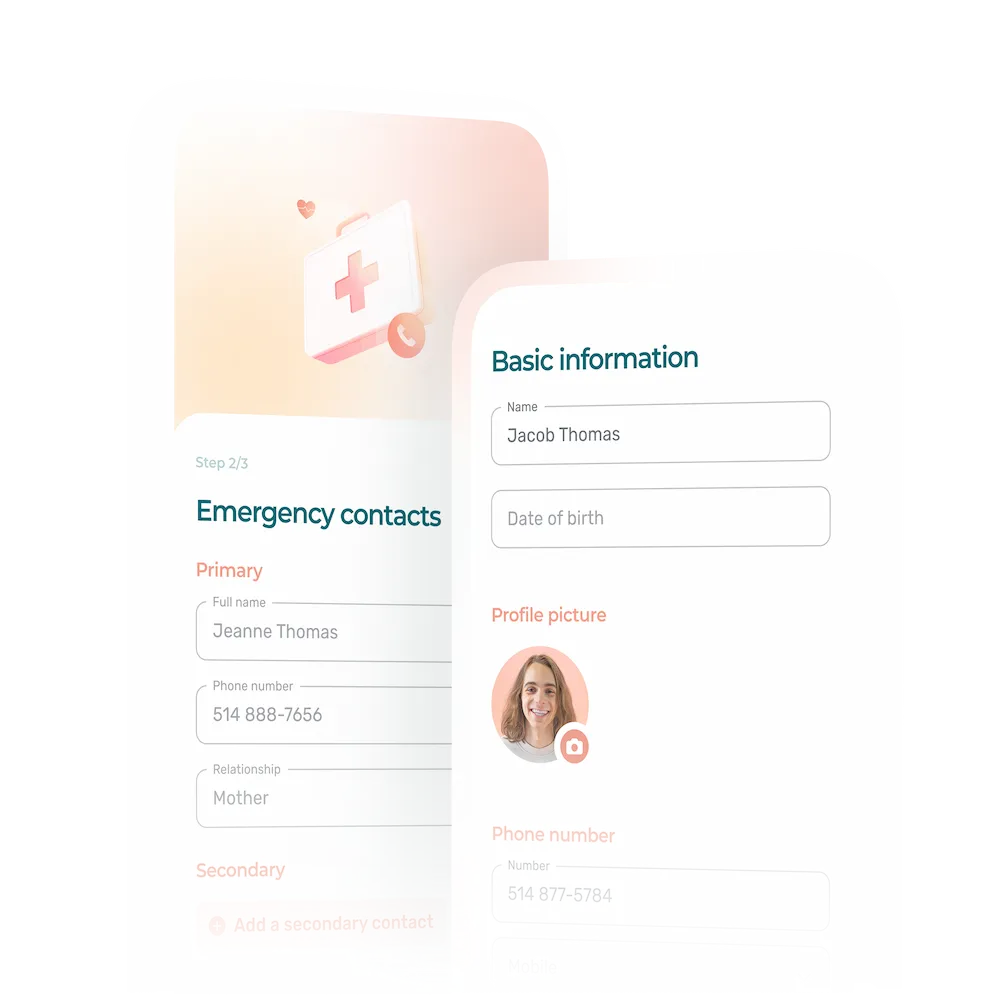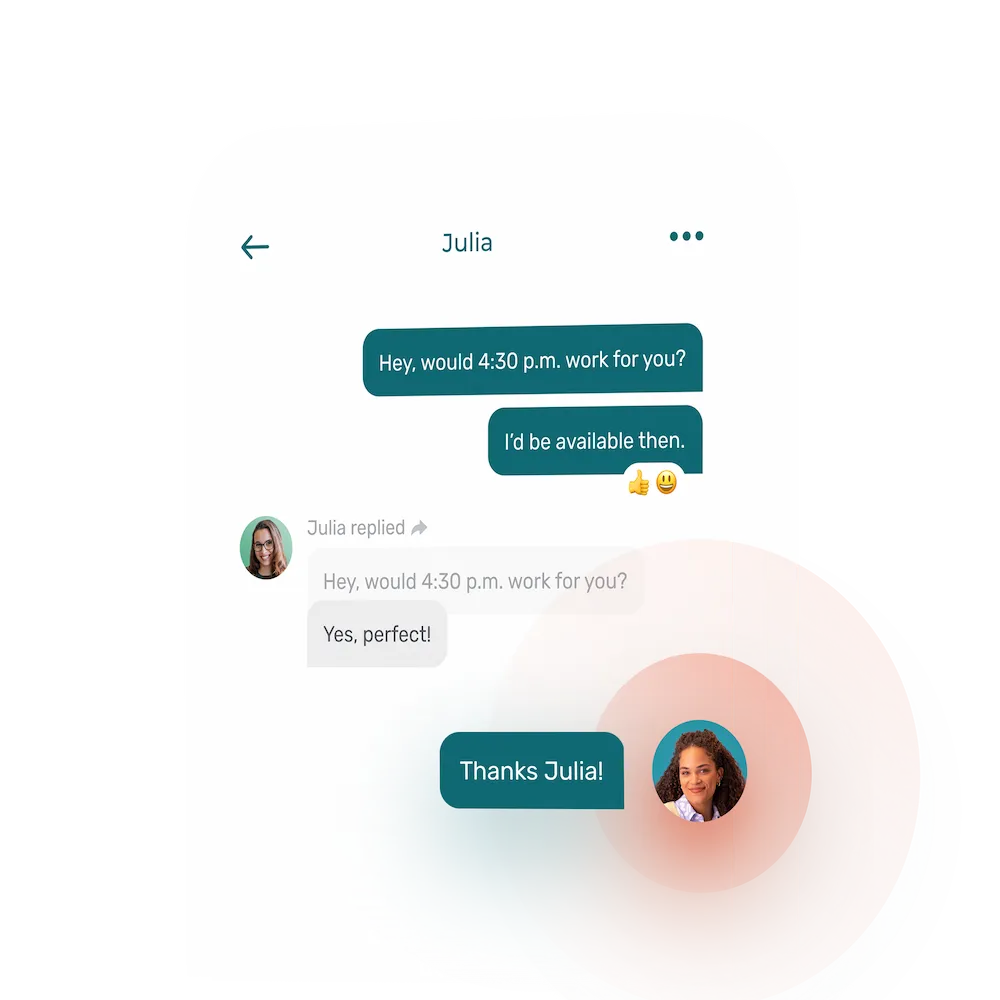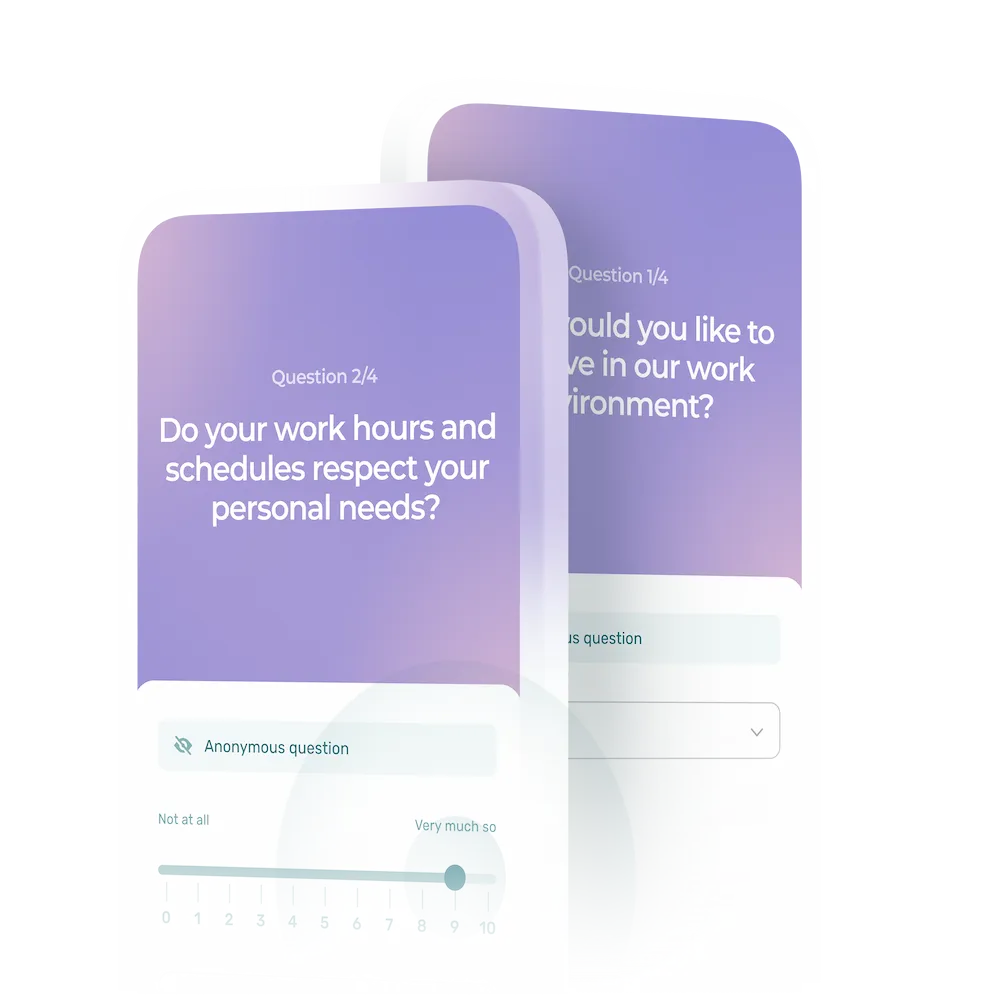Did you know that good shift planning can lead to happier, more productive workers? Lower labor costs, too? That’s not all.
With just a few minor changes to your shift planning practices, you can significantly improve your bottom line. Read on to learn about the benefits and best practices of effective shift planning.
Key Takeaways:
- Effective employee shift scheduling can benefit businesses in a number of ways: from more productive and happier shift workers to easier attendance tracking and better managed labor budgets.
- One shift planning best practice is to use shift planning software. It will simplify all aspects of employee management, scheduling, and payroll.
- When exploring shift planning software, look for one that best fits your business. To get the most from this tool, prioritize solutions with powerful features and tracking tools so that you can analyze data for continuous improvement.
What Is Shift Planning?
Shift planning—or workforce scheduling—is the process of strategically assigning shift workers a work schedule that meets organizational needs. It is essential for businesses with complex scheduling needs, such as those in healthcare, hospitality, retail, and manufacturing. An effective shift planning strategy goes beyond simply optimizing shift schedules. It also boosts productivity, reduces labor costs, and eliminates gaps in service or production. It can also increase workforce satisfaction, reduce turnover, and drive business growth.
Benefits of Shift Planning
Shift planning is essential for businesses with complex scheduling needs and multiple shift workers. When done well, it bridges the gap between organizational needs and workforce availability, ensuring tasks are efficiently executed without wasted resources or time.
Benefits of Shift Planning Include:
- Optimized Productivity: managers are better able to schedule the right number of employees at peak times, avoiding the risk of overstaffing or understaffing multiple shifts.
- Cost Efficiency: businesses can lower overtime expenses and minimize labor costs by matching workforce size to business needs.
- Improved Employee Satisfaction: businesses create schedules that are fair and predictable report higher employee morale and lower employee turnover rates.
- Compliance with Labor Laws: businesses are better able to abide by labor regulations, such as ensuring appropriate breaks and working hours.
- Enhanced Customer Experience: businesses see lower customer wait times and improved service quality.
- Operational Flexibility: businesses have a clear view of workforce availability, which allows them to adapt more quickly to unforeseen changes or emergencies.
- Efficient Resource Allocation: managers can avoid resource wastage by aligning the skills of employees with specific job requirements.
- Reduced Conflicts: managers can minimize scheduling conflicts and ensure hourly workers get their desired shifts, which leads to a harmonious working environment.
- Better Forecasting: businesses are better able to prepare for busy periods by analyzing historical data and predicting future needs.
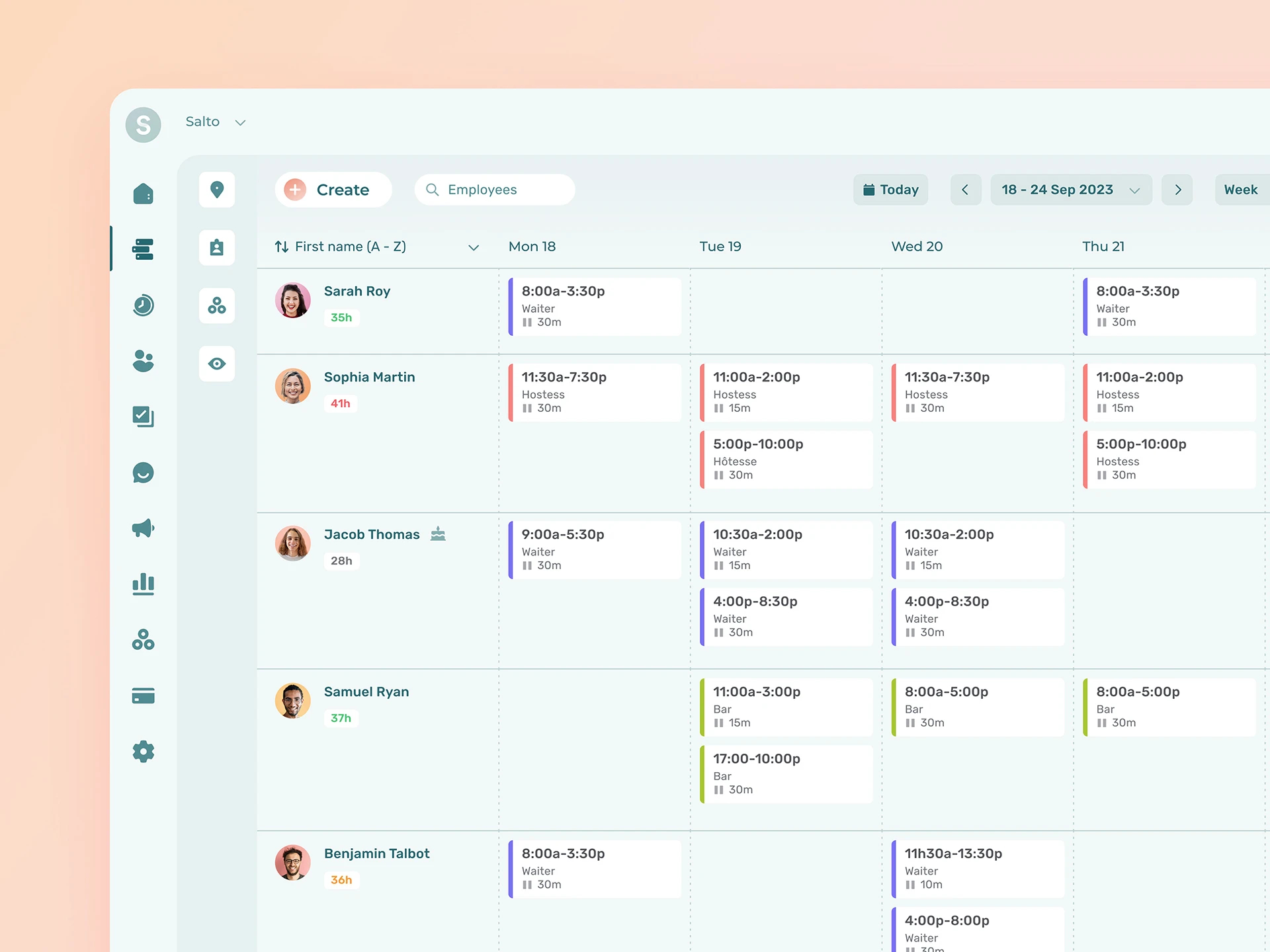
Shift Planning Best Practices
Below are the most widely accepted best practices for shift planning. Following these practices will lead to a more efficient and harmonious working environment, ensuring both business needs and employee satisfaction are met.
Understand Your Business Needs
Before creating any schedule, it’s crucial to be aware of your business’s peak times, slower periods, and any special events or circumstances that could affect staffing needs.
Tip: Analyze historical sales and staff data and previous schedules for meaningful scheduling insights.
Know Your Team’s Strengths and Weaknesses
Every employee has unique strengths and areas of growth. Align shifts with individual skills and expertise to optimize team productivity.
Tip: Assign different positions (such as cashier/waiter/hostess) to hourly staff to know which employees can cover which shift. Or add relevant documents and notes to employee records, such as a degree, special certification or training (like first responder).
Consider Employee Availability
Always take employee availability into account when it comes time to schedule employees, particularly if they are working split shifts or two shifts back-to-back. This will minimize the risk of scheduling conflicts or no-shows.
Tip: Have employees regularly fill out an employee availability form. Download out our Free Employee Availability Form Template.
Rotate Weekend and Night Shifts
Keep things fair and prevent burnout in your shift work schedule. Rotate weekend or night shifts among staff, so the same people aren’t always working the less desirable hours. That said, avoid overly frequent shift changes as this can be hard on a small team.
Tip: Find out which rotating shift schedule is best for your business.
Use Shift Planning Software
Modern problems require modern solutions. Shift planning software helps simplify the process of scheduling and assigning tasks, while also reducing errors and saving time.
Tip: Look for free trials of employee scheduling software to see which one is best for your business. Compare the top scheduling software.
Plan for Breaks
Ensure that your schedule abides by labor laws regarding meals, rest breaks, annual leave, etc. Employees should have adequate downtime during their shifts and over the course of a year.
Tip: Stay on top of provincial, state and federal labor laws.
Schedule in Advance
Offering employees their schedules well in advance gives them time to plan their personal lives and family events around work commitments. It also gives shift planners time to address potential conflicts early on and make the necessary scheduling changes.
Tip: Some fair workweek laws require 14 days notice before the first shift starts and others 21 days.
Establish a Clear Communication Channel
Whether it’s through software, a message board, or regular meetings, ensure that there’s a clear method for communicating shift changes or updates.
Tip: Simplify scheduling tasks & communication by opting for employee scheduling software that includes team collaboration and communication tools.
Train Multiple Employees for Different Roles
Cross-training can be invaluable, especially if you have a small team. When an employee misses a few work shifts due to illness or annual leave, having another trained individual can prevent disruptions.
Tip: See how to draw up a staff training plan.
Forecast and Adjust
Use historical data and current trends to forecast staffing needs. If you notice that certain times consistently require more staff, adjust your future schedules accordingly.
Tip: Create a dashboard to track employee attendance, lateness, and absence tracking, along with upcoming birthdays and work anniversaries.
Establish a Clear System for Shift Swapping
There will be times when employees need to swap shifts. Having a clear protocol ensures that the shift swapping process goes smoothly with no risk of understaffing.
Tip: See how to effortlessly schedule employee swap shifts.
Be Flexible and Open to Feedback
While it’s essential to have a plan, being rigid can backfire. Be open to making adjustments based on feedback from your team. Perhaps there’s another shift pattern that makes more sense for your small team, such as split shifts.
Tip: Conduct employee surveys to ask employees about their experience at work.
Encourage Self-Service
Empower employees to manage their availability, swap shifts, or request time off through shift planning software. This reduces the burden on managers and ensures employees have some control over their schedules.
Tip: Accommodating employee scheduling needs can lead to cost savings, improved attendance and productivity, and an increase in employee engagement, according to the Society for Human Resource Management. See how easy it is for employees to submit a time off request in Agendrix scheduling software.
Review and Reflect
Regularly review how well your employee shift scheduling is meeting business needs. This involves analyzing customer satisfaction, productivity, and employee feedback to make necessary adjustments to your employee shifts.
Tip: Use your scheduling software to track key metrics. See 25 HR metrics to include in a dashboard.
Using Shift Scheduling Software
Shift scheduling software like Agendrix is designed to help businesses create, manage, and communicate work schedules to their employees with minimal effort. Most of the software options on the market have a user-friendly interface and a myriad of shift planning features. The better ones can adapt to small teams or large teams scattered across multiple locations.
Key features to look for include integrated schedule templates for common shift patterns, time clocks, mobile apps, push notifications and tracking tools to track worked hours and labor budgets.
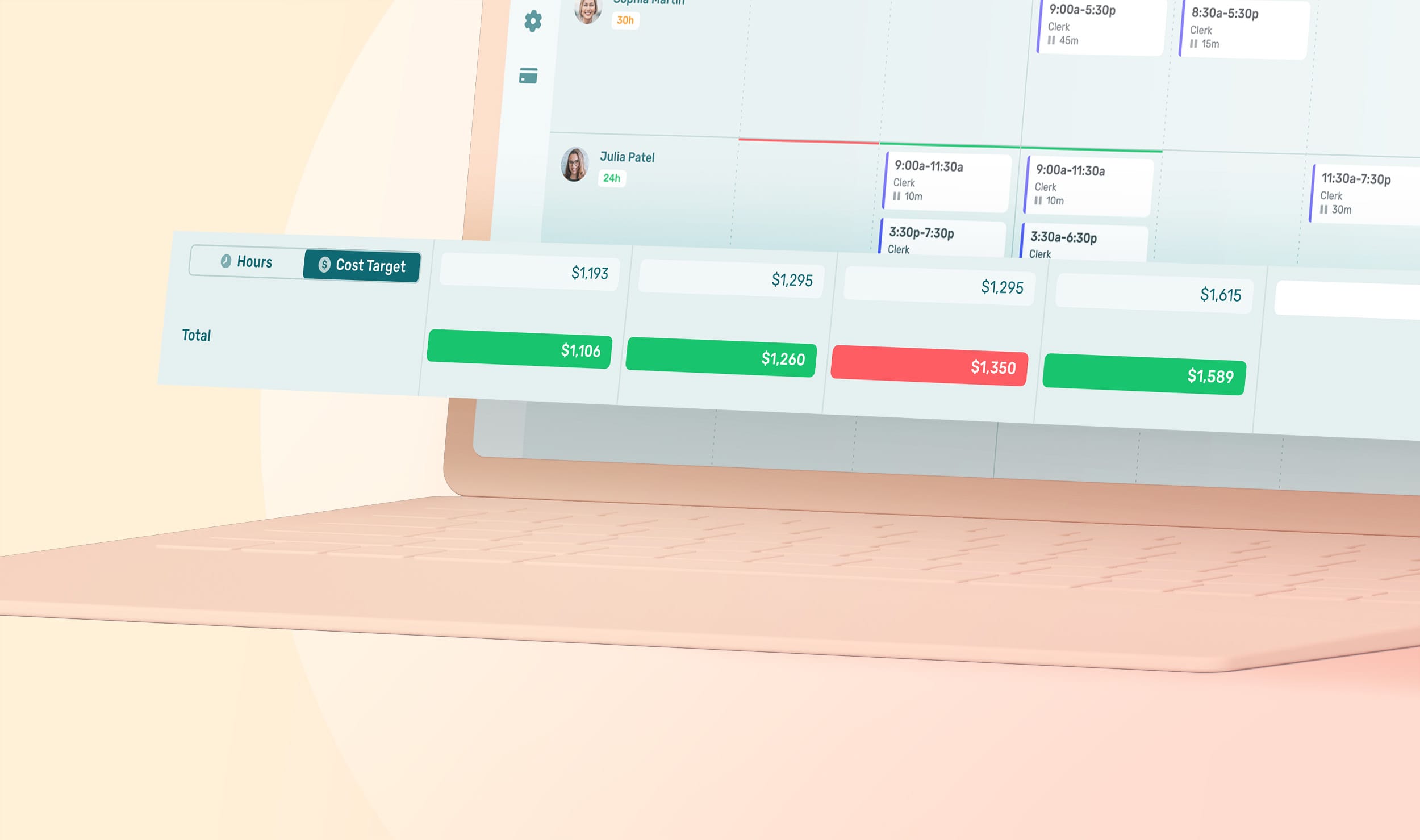
By integrating Agendrix into their operations, managers can swiftly handle any scheduling challenges and ensure that shift schedules align with both business demands and employee preferences. This leads to a more streamlined, efficient, and transparent scheduling process. In turn, this means increased productivity and employee satisfaction.
Simple breakdown of steps to use Agendrix:
- Set up your account: Begin by registering and setting up a free account for your business on the Agendrix platform.
- Input your employee details: Add all your employees into the system, including their contact information, roles, pay rates, and any other pertinent details.
- Gather your employees’ availability: Allow employees to input their available hours and days to ensure the scheduler has this information at their fingertips.
- Create your first schedule: Use the built-in shift templates to create your work schedule. Use the drag-and-drop interface to fill open shifts, copy shifts from one day or week to the next, etc.
- Track time-off requests: Employees can submit time off requests through the platform. Managers can review, approve, or deny these requests, and the schedule will adjust accordingly.
- Monitor labor costs: As you create the schedule, Agendrix provides real-time labor cost calculations to help you stay within budget.
- Publish & communicate the schedule: Once the schedule is finalized, publish it. Employees receive push notifications about their shifts, and any changes made later are updated in real time.
- Simplify shift trades: If employees want to trade shifts, they can propose the swap directly in the software. Upon manager approval—or not depending on your preference, the schedule updates automatically.
- Analyze & report: Use the reporting feature to analyze data like labor costs, employee punctuality, hours worked, and other metrics to make informed business decisions.
- Iterate for future scheduling: As you gather more data and feedback, adjust your scheduling process for even greater efficiency in subsequent weeks.
- Benefit from other features: Simplify your employee management with other features such as time tracking, centralized communication, employee surveys, employee record management, peer recognition, etc.
What Is the First Step in Shift Planning?
The first step in shift planning is understanding business needs. This involves identifying peak times, slower periods, special events, open shifts, or any circumstances that could influence staffing demands. A comprehensive understanding of these factors ensures that the scheduling process aligns with the organization’s operational requirements and maximizes productivity.
What Is the Shift Planning Process?
The shift planning process begins with understanding business requirements, then collecting data on employee skills, preferences, and availability. Following this, schedules are created—either from scratch or using shift templates—considering factors such as workload distribution, compliance with labor laws, and operational demands. After creating the schedule, it is communicated to the team, and adjustments are made as necessary.
Regular evaluations ensure the process evolves to meet changing business and employee needs.
What Is the Purpose of a Shift Planner?
The purpose of a shift planner is to efficiently allocate human resources to ensure that business operations run smoothly and productivity is maximized.
A shift planner aims to balance the demands of the organization with the needs and preferences of employees. By doing so, it reduces labor costs, ensures compliance with labor laws, prevents understaffing or overstaffing multiple shifts, and contributes to improved employee morale and overall business success.
What Are the Benefits of Shift Planning Software?
Both small businesses and larger teams with complex scheduling needs can benefit greatly from using shift planning software.
Unlike manual scheduling, which can be time-consuming, error-prone, and inefficient, shift planning software streamlines the entire process. It creates a centralized employee database and allows managers to analyze data ranging from weekly gross pay calculations to quarterly labor budgets.
Most employee shift scheduling software is packed with shift planning features and boasts an intuitive user interface. The more advanced software includes built-in schedule templates for the most common shift patterns and push notifications so that hourly workers never miss shift updates or so that managers never miss time off requests.
Other key features found in some software include employee availability tracking, and easy communication between managers and hourly employees. This level of automation ensures not only that the most optimal schedules are created but also that they can be adjusted swiftly in response to unforeseen changes. The most advanced software is flexible enough to adapt to the specific needs of multiple industries.
Beyond efficiency, shift scheduling software like Agendrix integrates time clock features and powerful analytics to provide insights into labor costs, productivity, and other key performance indicators, aiding businesses in making informed decisions.
For instance, one company says using Agendrix resulted in a 75% reduction in time spent on task management, translating to hours saved each week. Integrating Agendrix into their workflow not only optimized operational efficiency but also elevated the overall workplace experience for both managers and hourly workers.






